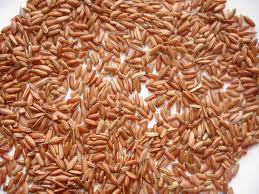
ZAMBOANGA CITY (Mindanao Examiner / June 18, 2013) – Looking back in the past, Filipinos ate only brown rice until Westerners introduced the modern milling process that produced white, polished rice which soon dominated the market and eventually changed the cultural tradition on rice preference.
Bringing back the tradition of eating brown rice can help achieve the government’s goal of rice self sufficiency in the near future while addressing the country’s nutritional and health problems.
Rice is the major staple food of Filipinos, contributing about 35.7% of the average daily individual food intake and making it the major source of carbohydrates in the Filipino diet.
And white rice is the most-consumed kind of rice today, according to the Food Consumption Data of the 7th National Nutrition Survey conducted by the Food and Nutrition Research Institute of the Department of Science and Technology.
Brown rice, however, is the kind of rice that has undergone minimal milling and is now gaining popularity primarily due to its nutritional and health benefits. It provides all the necessary carbohydrate requirements of an individual just like white rice. Its bran layer is a source of dietary fiber, minerals and B-vitamins.
Beyond its nutritional and health benefits, every Filipino who eats brown rice everyday may help the country achieve its vision of rice self-sufficiency.
With the bran and the embryo intact and fewer broken grains, whole grain-milling recovery in brown rice is 10% higher than white rice. Thus, with higher recovery of milling and consumption of brown rice, the country’s national rice importation requirements may be reduced.
The Department of Science and Technology through the Food and Nutrition Research Institute is the leading the research and development on brown rice to determine the various aspects of improving the stability and its shelf-life.
With this, brown rice can be stored up to 9 months with no significant changes in nutrient composition and sensory qualities. (Charina Javier)
